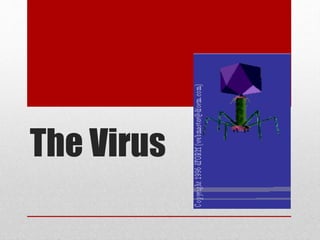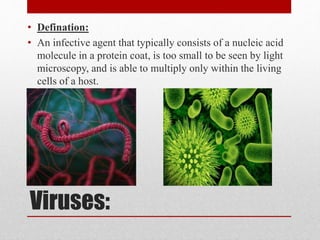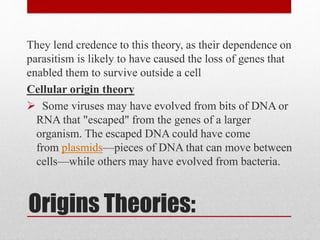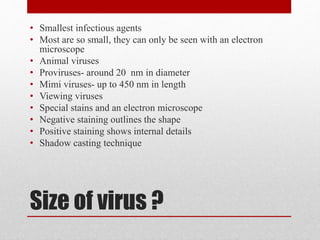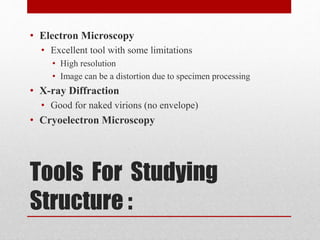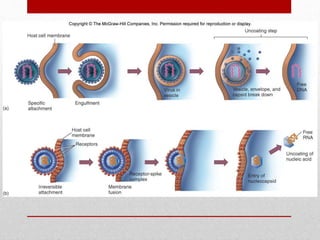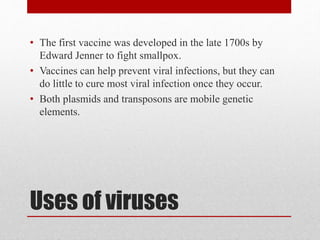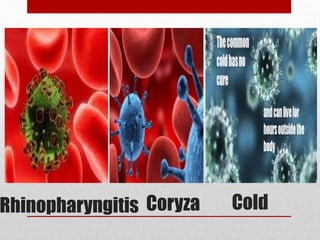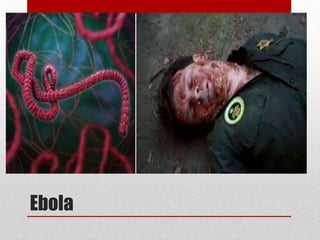The document discusses viruses, defining them as infectious agents that can only multiply within host cells and consist of nucleic acids and protein coats. It covers virus structure, classification, life cycles, methods of transmission between hosts, discovery, theories of origin, and techniques for studying and cultivating viruses. The document provides an overview of the key aspects of virology, including what viruses are, how they spread and reproduce, approaches to classifying them, and historical developments in the field.
